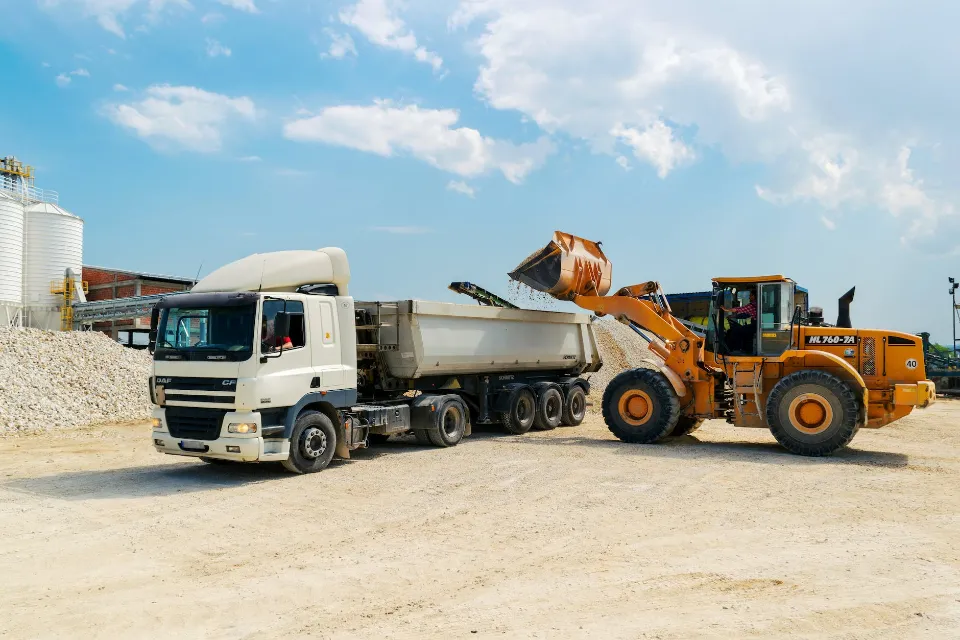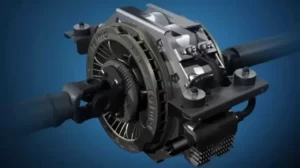
Are Semi Trucks Manual or Automatic – What to Consider
Semi trucks with manual transmissions were the norm for a long time. There is now a new generation of automatic semi trucks thanks to technological advancements. Despite being different from the automatic transmissions found in a typical sedan or SUV, these transmissions still spare the truck driver from having to change gears. Learn more about the changing transmissions available on new semi trucks today with Rechtien International Trucks!
Are All Semi Trucks Manual?
There is no doubt that not all big rigs and semis are automatic. As stated above, many modern semis come with automatic transmissions, and some models even let you choose between an automatic and a manual transmission.
The type of goods the truck will be used to haul and load determines the transmission that is most appropriate for the situation as well as the trucker’s preferences. Fewer trucking companies opt for manual transmissions to reduce their fuel expenses.
Manual Vs. Automatic Semi Trucks
Although many professional truckers swear by manual transmissions, particularly since earlier automatic models had problems with shifting too early or late. However, the newer automatic models are here to stay— and they offer better performance than their predecessors. That’s because, when compared to manual transmissions, automatic transmissions are:
- Easier to Use- Training will be easier for new truck drivers when learning on an automatic semi truck.
- Safer- While manual shifting provides a feeling of control, automatic shifting allows your vehicle to respond immediately to changing conditions and situations. That’s because before shifting, the computer will consider the vehicle’s angle, speed, and engine torque.
- More Efficient- Expert truckers may be able to coax some impressive gas mileage out of their rig, but across the board, automatic transmissions prove to be more efficient than manual models.
Why Do Semi-trucks Use Manual Transmissions?
The simple solution is that manual transmissions are less expensive. They are easier to assemble because they have fewer parts. Additionally, they are stronger, which is crucial when hauling 80,000 pounds. You don’t want those gears to fail on you while you’re driving because they are under a lot of strain.
Many seasoned truckers are only comfortable operating manual transmission vehicles, including cars and trucks. The average age of a truck driver is 55 years old, which means they were born in 1966 and driving by 1984. There’s a good chance they were raised near manual transmission cars. 25% of all new cars sold in 1985, according to the EPA, had manual transmissions.
So operating a semi-truck with a manual transmission shouldn’t be a problem for these experienced drivers. The transmissions used by semi-trucks, however, are very dissimilar from those found in standard automobiles.
Automatic Vs Manual Transmission?
Both manual and automatic transmissions are available for semi-trucks. Through a drive shaft attached to the transmission, the engine’s power is transferred to the road.
An automatic transmission uses an electro-hydraulic system to shift gears without any input from the driver. Semi-trucks can climb steep inclines more easily thanks to it, and drivers can board and exit their cars more quickly. There are no clutch pedals in an automatic transmission and no reverse gears.
By lowering engine speed when not in use and by eliminating idle time at traffic lights, automatic transmissions also cut down on fuel consumption. With a clutch pedal, drivers of manual transmissions can change gears with their foot while controlling how quickly the engine of the car runs.
In addition, manual transmissions give drivers access to reverse gear, which rear-wheel drive trucks might not have. Additionally, they make it easier to drive on steep terrain, allow for low gears for off-roading, and improve acceleration and braking control.
How Do Manual Semi-truck Transmissions Work?
Semi-trucks typically have more gears than regular cars because they carry heavier loads. Semi-trucks now come with up to 18 gears. The Ford Mustang, in contrast, has 10 gears (more ratios can be handled by automatic transmissions). So how exactly do these sophisticated semi-truck transmissions operate?
Actually, semi-truck transmissions function somewhat similarly to two transmissions combined. Typically, you shift just like a normal car but have a high range and a low range. The aforementioned video emphasizes the idea that you need a specific number of gears for accelerating and additional gears for traveling at high speeds or accelerating while carrying heavy loads.
Semi-truck transmissions are much more complicated than “they have more gears,” as sometimes the air pressure inside the gearbox is so high, it can shift gears semi-automatically. However, as was already mentioned, many experienced drivers appear to be effortlessly changing gears.
Automatic transmissions will become the norm as semi-truck technology develops. A semi-truck with an automatic transmission is currently more advantageous to operate than one with a manual transmission.
Why Automatic Semi-truck Transmissions Are Becoming More Important
Automatic transmissions are more reliable, user-friendly, and effective. The only significant drawback of an automatic transmission semi-truck is the higher cost of construction and maintenance.
Not exactly the most fuel-efficient vehicles, semi-trucks. However, automatics depend on the driver’s skill, whereas manuals are programmed to get every last mile out of the trucks. And just in case you didn’t know, truck driving isn’t exactly simple.
However, there’s a bit of a shortage right now, which is the main reason trucking companies need to adapt to automatic semi-trucks. There are currently 80,000 open truck driving positions, but very few people are even familiar with manual transmissions. Undoubtedly, all aspiring truck drivers must attend a training program where they will learn how to operate a manual semi-truck. They should be able to operate an automatic if you want to reach a wider audience and simplify life for the new drivers you are hiring.
Automatic transmissions in semi-trucks will continue to evolve. The majority of vehicles on the road, however, are manual semi-trucks. So keep in mind that the next time you see one on the road, the drivers are probably rowing it themselves.

How Much Does It Cost to Get An Automatic Truck Serviced?
Automatic trucks require regular servicing to ensure they are in optimal condition, especially when they have to do a long haul. The operator should not compromise in any way in this area.
An automatic semi-truck would cost around $400 to $700 per service. Naturally, this is something that is dependent on the service provider, as different mechanics charge a different rates. The cost of the truck would increase if additional work was necessary.
The price of a service for a manual transmission truck, however, ranges from $300 to $600; it is a small but noticeable difference.
It is because there the automatic transmission is a lot more complex than a manual one, hence the higher service charge. Additionally, the cost of repairing a problem in an automatic semi would be slightly higher than in a manual one.
The wise thing a transportation company could do is partner up with an independent shop for their service. They can service their fleet effectively in this way, and independent shops charge less than a dealership.
Automatic Vs. Manual: Which is Better?
Semi-trucks can have either an automatic or a manual transmission. Manual transmissions have been the standard transmission in semi-trucks. However, they are not as efficient as automatic transmissions and require more maintenance.
- Due to the automatic use of a torque converter to change gears, automatic transmissions are more efficient than manual transmissions. Manual transmissions don’t have a torque converter and must be shifted manually by the driver.
- Faster acceleration is possible with an automatic transmission while it takes longer with a manual transmission because the driver must manually shift the gears.
- Due to the lower number of moving parts that require maintenance or replacement, automatic transmissions are less expensive than manual transmissions.
In conclusion, automatic transmissions unquestionably have a benefit over the traditional manual transmission system. However, the decision of which direction to take is largely up to the truck’s driver or operator.
Conclusion
Both automatic and manual transmission semi-trucks are available. The choice ultimately rests with the semi-truck driver, even though automatic semis are unquestionably superior to their manual counterparts. Any option you choose, you must evaluate it carefully to achieve the best outcome.



Average Rating